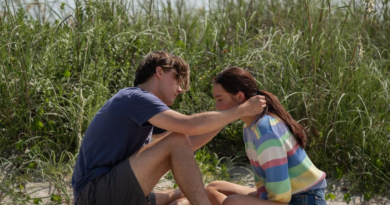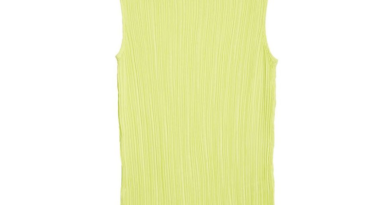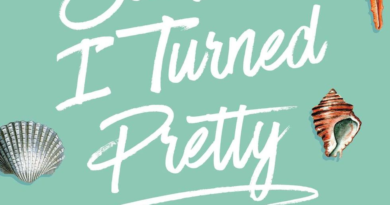The Women Changing Fashion
Over the last decade, we’ve all become increasingly well-informed about where, how, and by whom our clothing is manufactured. Activist Aditi Mayer has been one of the voices bringing attention to those questions. She began examining the historical, social, and political injustices that bolster the estimated $1.7 trillion industry in the wake of 2013’s Rana Plaza factory collapse in Bangladesh. “All the greatest fights of our time—from the climate catastrophe to racism—are acutely linked by a mentality of seeing nature, or communities, as disposable,” she says. “Fashion, as an industry, is an extension of this.”
Each of the 12 women featured here experienced similar moments that spurred them to do their part and utilize their own unique skill sets, from policymaking to inventing alternative leathers.
THE JUSTICE LEAGUE
Since 2016, Mayer has championed the rights of garment workers in downtown L.A., fighting for policies such as California’s Garment Worker Protection Act, which went into effect in 2022. Meanwhile, on the East Coast, Alessandra Biaggi is promoting the Fashion Sustainability and Social Accountability Act, which Biaggi, who was elected to the New York State Senate in 2019, introduced last year with Assemblymember Anna R. Kelles. It would require companies doing business in the state with revenues in excess of $100 million to map 50 percent of their supply chains and disclose their social and environmental impacts. “For too long, the fashion industry has operated in a black box, with little accountability,” Biaggi says. Though she has since traded politics for academia—she’s starting Harvard Divinity School in the fall—she plans to continue the fight for environmental justice, and hopes her education will equip her with “even more powerful tools of dialogue and truth-telling.”
Studio 189 cofounder Abrima Erwiah was working for Bottega Veneta when she observed how differently Italy’s artisans were valued than those in developing economies, witnessing the gulf firsthand while visiting family in Ghana. After an invitation from actress Rosario Dawson to attend a philanthropic mission to the Democratic Republic of the Congo—where they met female victims of sexual violence who were supporting their families with the proceeds from sales of their crafts—the duo solidified the idea for Studio 189. Propelling African artisanship into the luxury space, the brand empowers women while remaining environmentally conscious. “We consider social impact a part of being sustainable,” Erwiah says.
Designer Svitlana Bevza is best known for her sustainable ethos (Gigi Hadid and Emily Ratajkowski are fans). Forced to flee her native Ukraine last year (she has since returned), Bevza produced her spring collection with an all-Ukrainian team via Zoom: “By being a voice for my country and an example for [others] who were forced to leave, I hope to show them how to carry on.”
THE GREEN GODDESSES
While on sabbatical from a finance career, Vanessa Barboni Hallik says she started “redefining how I viewed success, shifting emphasis from external recognition to internal values.” Determined to help counter fashion’s environmental impact, she founded the sustainably manufactured line Another Tomorrow, which launched a resale program last year. Next up: a net-carbon-sequestering wool farm.
For model Candice Swanepoel, a long career in fashion helped spur her creativity and led to the launch of Tropic of C, one of the first swimwear brands to incorporate sustainable fabrics (such as ECONYL® regenerated nylon) and production methods. “No matter what you are creating in the world, I believe there is always a conscious way of doing whatever that may be,” says Swanepoel. “I’m happy to see that many more fashion brands are now doing the same.”
Not all fashion starts in a design studio. In a plant in the Bay Area, MycoWorks’ Sophia Wang is creating the leather of the future using mushrooms. Celebrity makeup artist Daniel Martin recently collaborated with the company to create a brush case, and MycoWorks got an earlier vote of confidence in 2022 via an influx of $125 million in a Series C funding round. “Fashion is a powerful language for creating new narratives about what’s valuable, desirable, ethical, and necessary,” Wang says.
The industry is rife with accolades, but few are worth their salt when it comes to being green. The Butterfly Mark is a notable exception: The highest recognition a luxury brand can receive for sustainability across its supply chain (recipients include Dior couture and Tom Ford Beauty), the mark was created by sustainability expert Diana Verde Nieto after a conversation with Sir David Attenborough about the British Large Blue butterfly, which had been brought back from the verge of extinction in the 1980s. “I found it a great symbol to represent the fragility of our planet and the strength of our convictions, big or small, to better our world,” she says.
THE COMMUNITY BUILDERS
Among the efforts to further diversity and inclusion in the fashion industry, few have been as consistent and successful as Harlem’s Fashion Row, founded nearly 16 years ago by Brandice Daniel in order to mentor and provide a platform for BIPOC designers with its annual fashion show and other events. Over that time, Daniel has forged partnerships with companies like LVMH and Tiffany & Co. A donation from the CFDA in 2020 enabled the launch of the ICON360 program, which to date has donated more than $2 million to fashion programs at HBCUs and to BIPOC designers who struggled with keeping their businesses open during the pandemic. “HFR has always been bigger than me, and the designers we work with keep me motivated,” Daniel says.
PR maven Sandrine Charles has also been busy: After carving out a successful career in PR, she founded her own consulting firm in 2016, became a cofounder of the Black in Fashion Council in 2020, and now serves on the board of UNICEF Next Generation. Among the council’s many initiatives is the Discovery Showroom, a partnership with IMG that helps promote Black talent in New York during Fashion Month. Despite all she’s accomplished, Charles isn’t one to rest on past laurels. “It’s about the long game. Many things haven’t changed, but many [brands] are actively sticking to the changes that they proclaimed in the wake of wokeness in 2020,” she says. “My culture keeps me motivated. I want to leave the door open to make it easier for the next person to have a chance.”
Across the pond, Karoline Vitto is leading the charge for size inclusivity. The Brazilian-born designer made a splash with her London Fashion Week debut as part of Fashion East in September, with body-con jersey pieces that were shown on models ranging in size from 6 to 18—a still-too-rare occurrence on the runway these days. “I am creating a space for people who haven’t felt like they were part of the conversation before,” Vitto says. Customers and models alike have told her that “we changed the way they look at themselves.”
This article appears in the April 2023 issue of ELLE Magazine.
Naomi Rougeau is ELLE’s senior fashion features editor.









